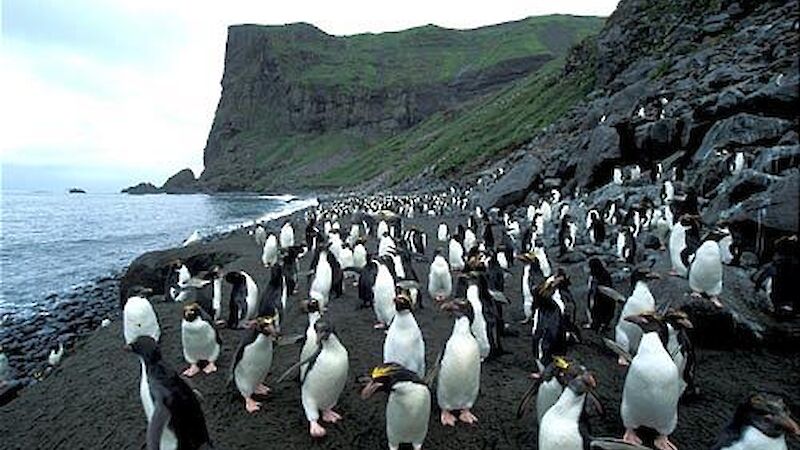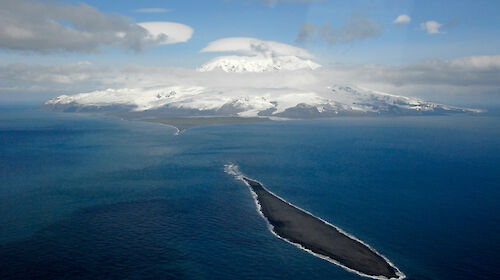Satellite trackers transmitting the movements of these wild species allow visitors to the Australian Government’s Antarctic Division (AAD) website to monitor how far and where they travel.
AAD scientists and support personnel have been on Heard Island since mid-December after sailing from Fremantle in Western Australia to collect information that will provide another piece in the complex puzzle of climate change and its impact on biodiversity, and on the role of Heard Island’s predators in the Heard Island and McDonald Island (HIMI) fishery.
Biologists are examining the interactions between the island’s five key predators – king and macaroni penguins, Antarctic fur seals and light-mantled sooty and black-browed albatrosses – and their prey, the ocean environment and commercial fisheries.
Program leader Dr Steve Nicol said that data gathered during the expedition would be useful in developing ecosystem models for managing commercial fishing in the HIMI Marine Reserve.
Australian fishing companies have been involved in a sustainably-managed fishery for toothfish and icefish at Heard and McDonald Islands since 1997.
HIMI was included on the World Heritage List in 1997 and in 2002 declared a marine reserve. Covering an area of 6.5 million hectares or 65,000 square kilometres, it is the world’s largest marine reserve.
Heard Island, located in the middle of the Southern Ocean just south of what is known as the Antarctic Convergence where icy southern waters meet those of the temperate north, is ideally situated to study the effects of climate change.
“This remote and windswept island is teeming with wildlife whose foraging habits hold important information. The land-based research is being carried out at the same time as complementary ship-based research from the AAD’s flagship, Aurora Australis,” Dr Nicol said.
“Scientists on board are using the animal track data to see where to take the ship to sample the food source and see what food is available.”
So, how far do Heard Island’s predators travel to catch their food? Where do they go and is there a common pattern among the species?
Information from the satellite trackers is updated daily and visitors to the website can keep up with activities of the penguins, seals and albatross as they go about their routine of searching for and bringing back food for their young.


